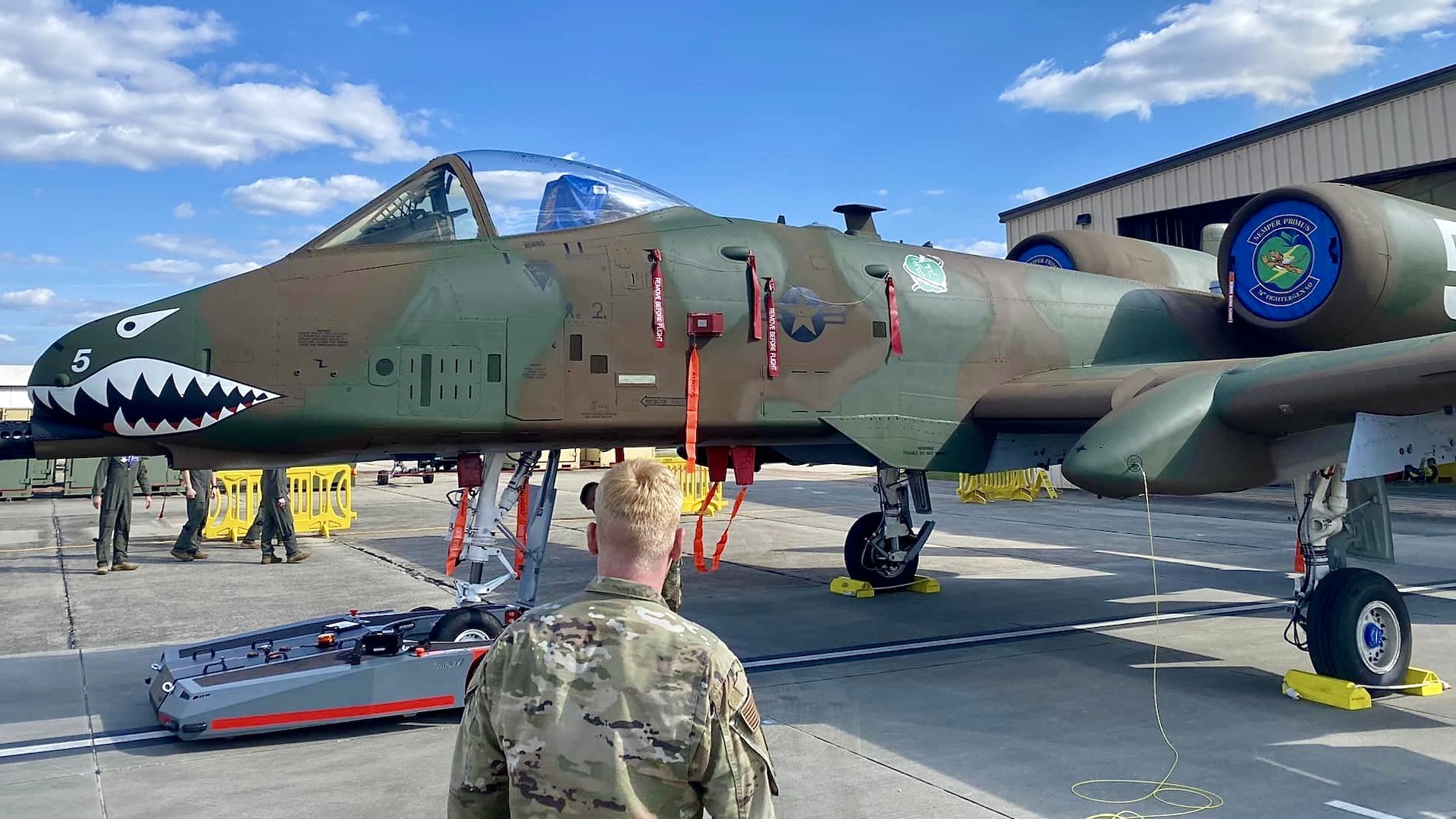An A-10C Warthog has emerged at Moody Air Force Base (AFB) sporting a heritage livery that commemorates the First American Volunteer Group (AVG), also known as the “Flying Tigers,” which flew during World War II, and one of the unit’s pilots in particular, Charles R. Bond Jr.
Images of the freshly-painted aircraft were released on February 8 by Col. Russell “Bones” Cook, commander of the U.S. Air Force’s 23rd Wing, which is based at Moody AFB in Lowndes County, Georgia. 23rd Fighter Group, part of the 23rd Wing, consists of two combat-ready A-10C squadrons, 74th Fighter Squadron and 75th Fighter Squadron, as well as the 23rd Operations Support Squadron. Based on the engine covers seen in the top-shot above, it would appear that the A-10 is attached to 74th Fighter Squadron.
The War Zone has reached out to Moody for information about the A-10 and its new commemorative paint scheme.
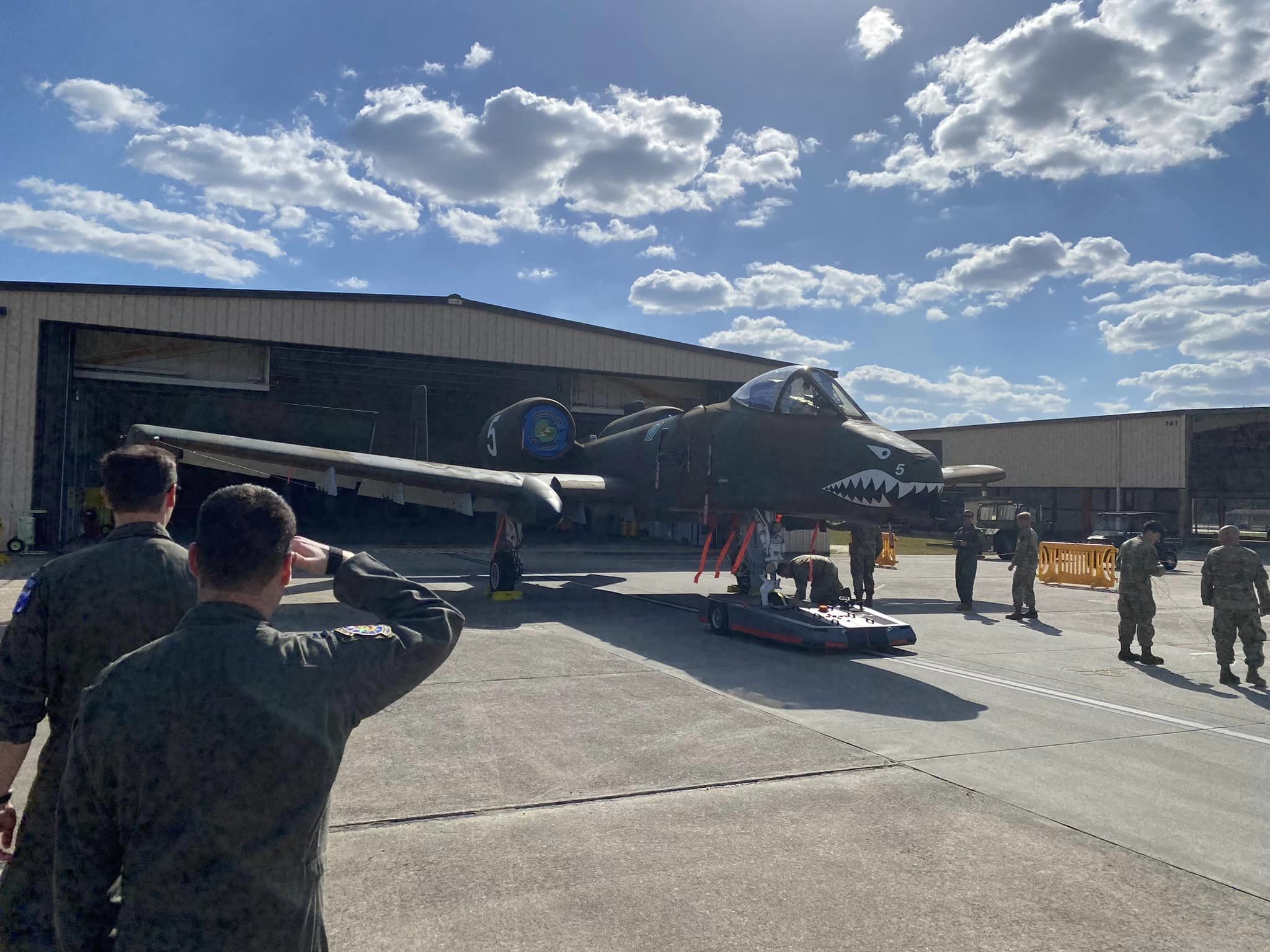
Commemorative paint schemes often take inspiration from historical camouflages. There are other A-10s with such liveries, including an example with the Vietnam War-era Southeast Asia camouflage pattern that belongs to the U.S. Air Force Warthog Demonstration Team, which you can read more about in this past War Zone story.
As noted, the livery chosen for the 23rd Wing’s A-10 resembles the camouflage scheme seen on the Flying Tigers’ World War II-era Curtis P-40C Warhawks – a dark tan and green variation. Active between 1941-1942, the original Flying Tigers comprised volunteer pilots from the United States Army Air Corps, Navy, and Marine Corps. Three fighter squadrons were tasked with defending China against Japanese forces. These U.S. squadrons were officially part of the Republic of China Air Force.
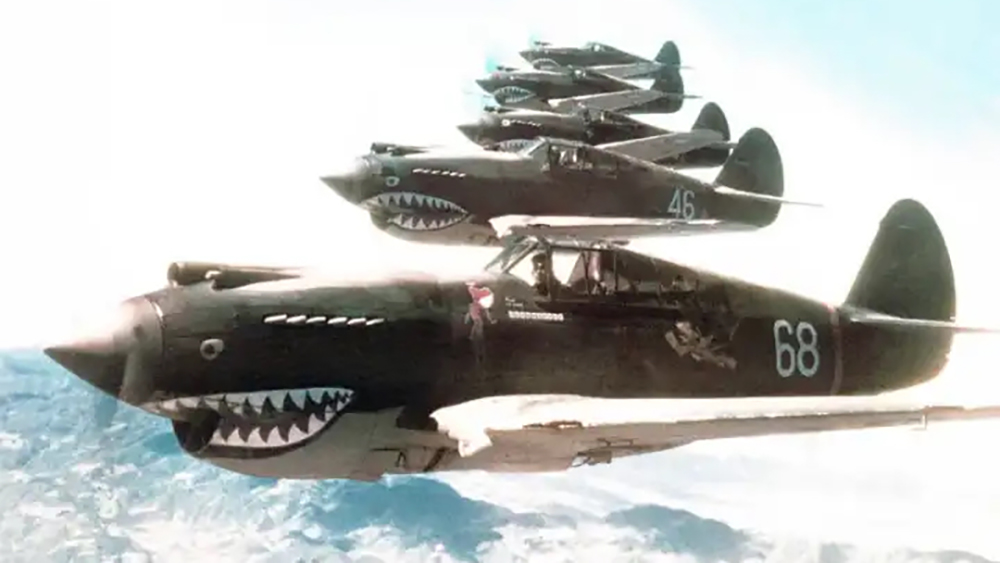
Alongside the more general paint scheme, 23rd Wing’s A-10 presents specific references to famed Flying Tigers ace Charles R. Bond Jr.
For one, it sports the distinctive ‘Adam and Eve’ emblem featured on Bond’s No. 5 P-40C, which can be seen below in the photos taken at Moody AFB. Here, Adam and Eve are depicted in a green apple encircled by a snake. As the Air Force Heritage Flight Team indicates, this is something of a tongue-in-cheek reference to Eve’s chasing Adam as the ‘first pursuit,’ and the original Flying Tigers being a pursuit squadron.
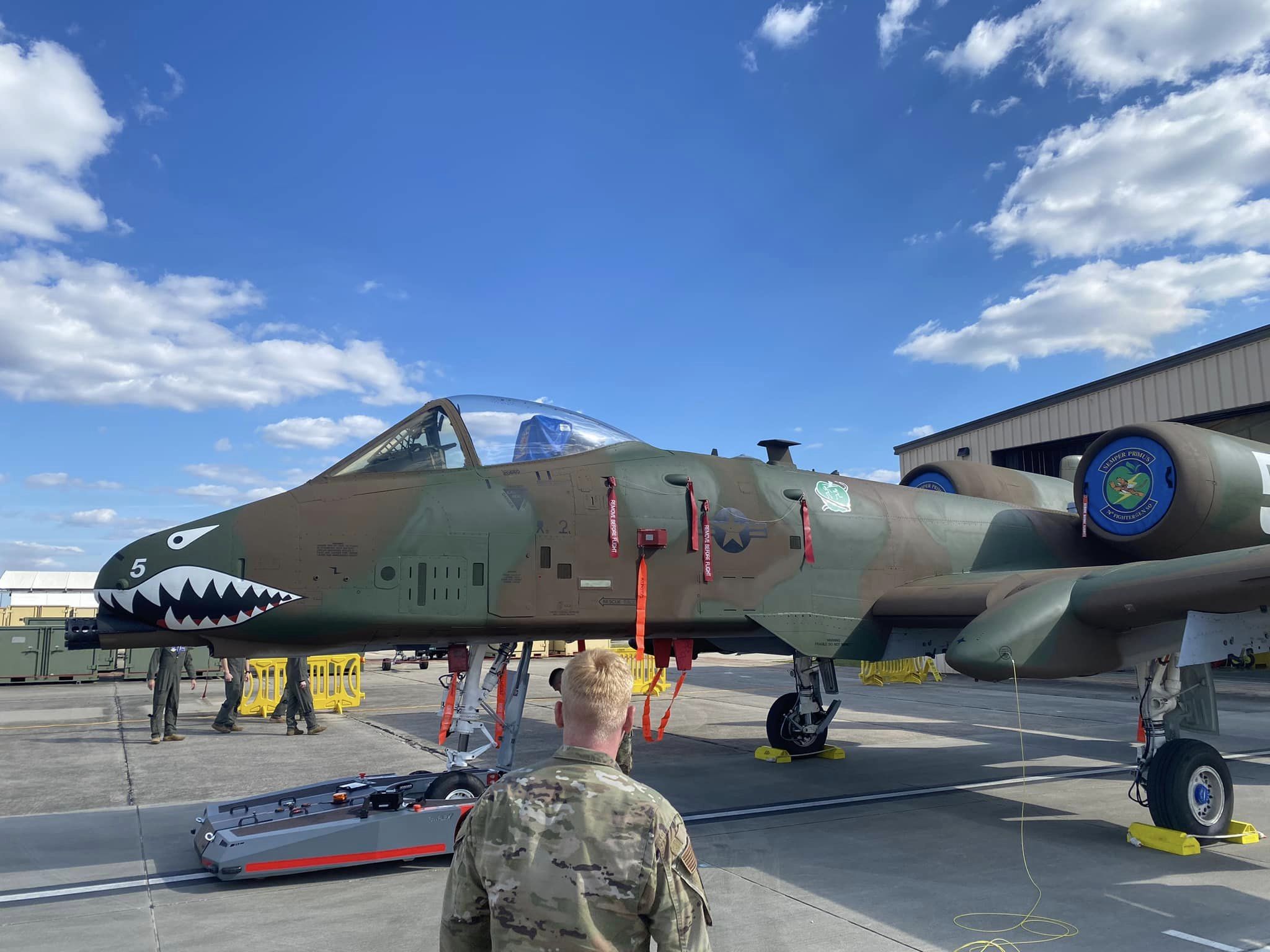
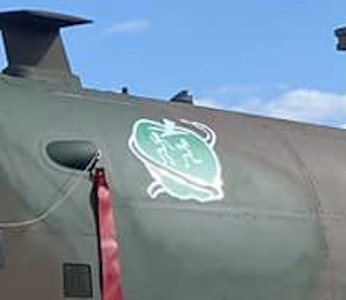
A P-40N Warhawk owned by the Cavanaugh Flight Museum in Addison, Texas, which has a replica paint scheme of Bond’s war-era No. 5 P-40C, shows the ‘Adam and Eve’ logo more clearly in the image below.
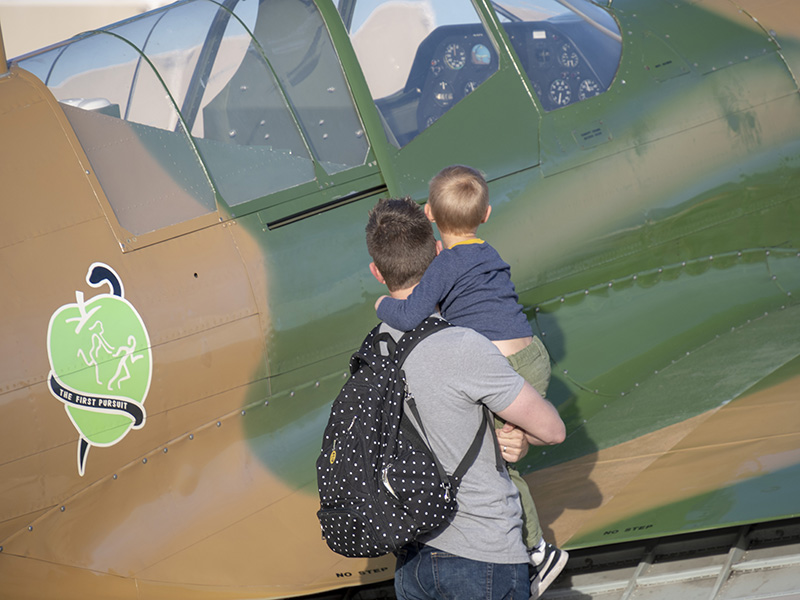
In addition, the new A-10 livery clearly sports number ‘5’ markings in reference to Bond’s No. 5 P-40C, seen below.
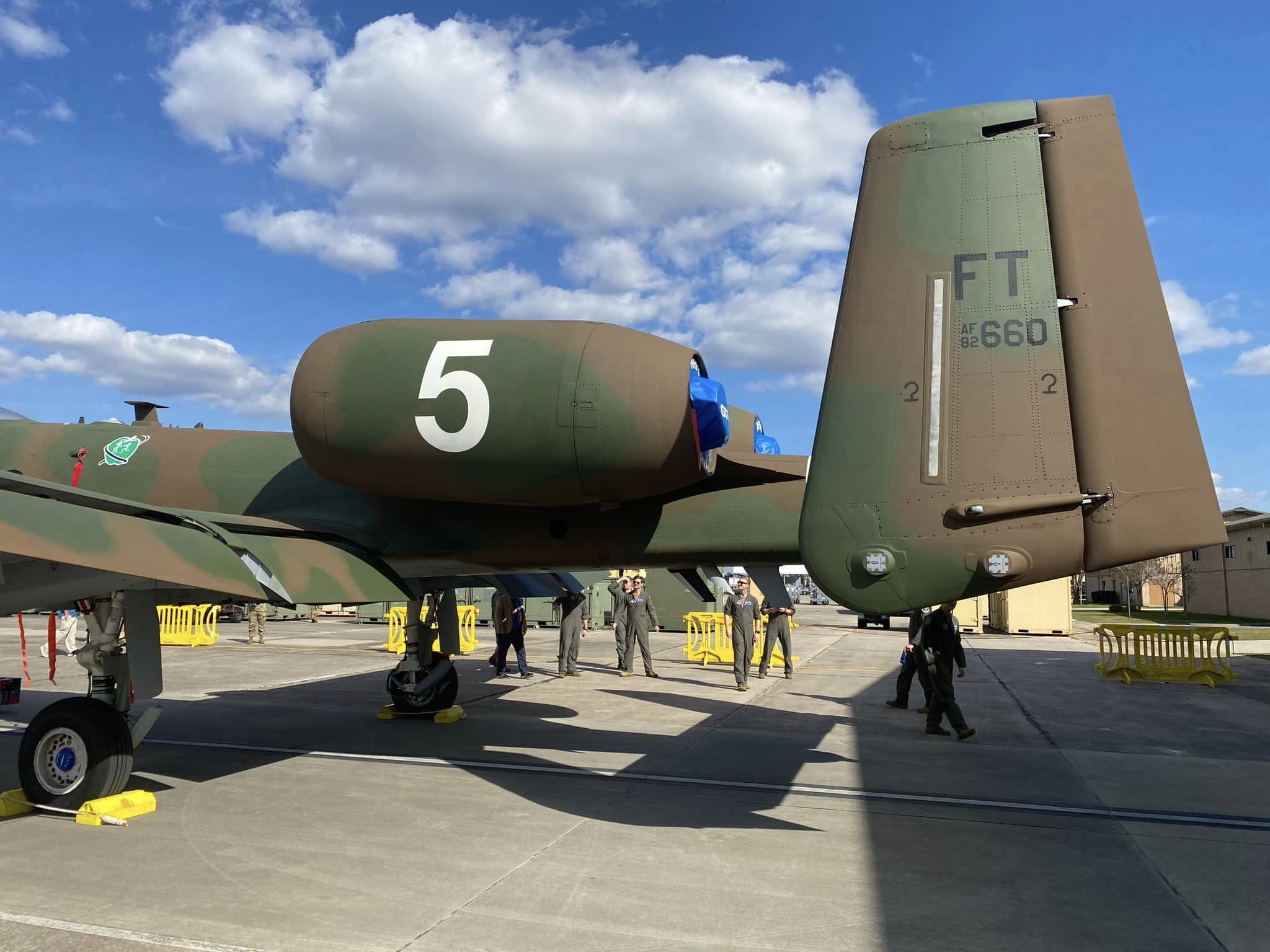
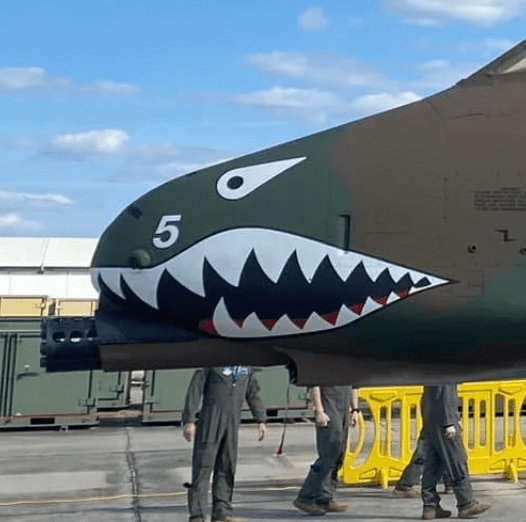
The references to Bond are also especially fitting because, as Air Force Heritage Flight notes, he was among the first, along with Erik Shilling, to bring the shark-tooth motif to the Flying Tigers – Commonwealth P-40s in North Africa were the first to sport the shark-tooth design. In more recent years, A-10s attached to the 23rd Wing have become synonymous with the shark-tooth mouth design, while other A-10 units feature snakehead and warthog mouths.
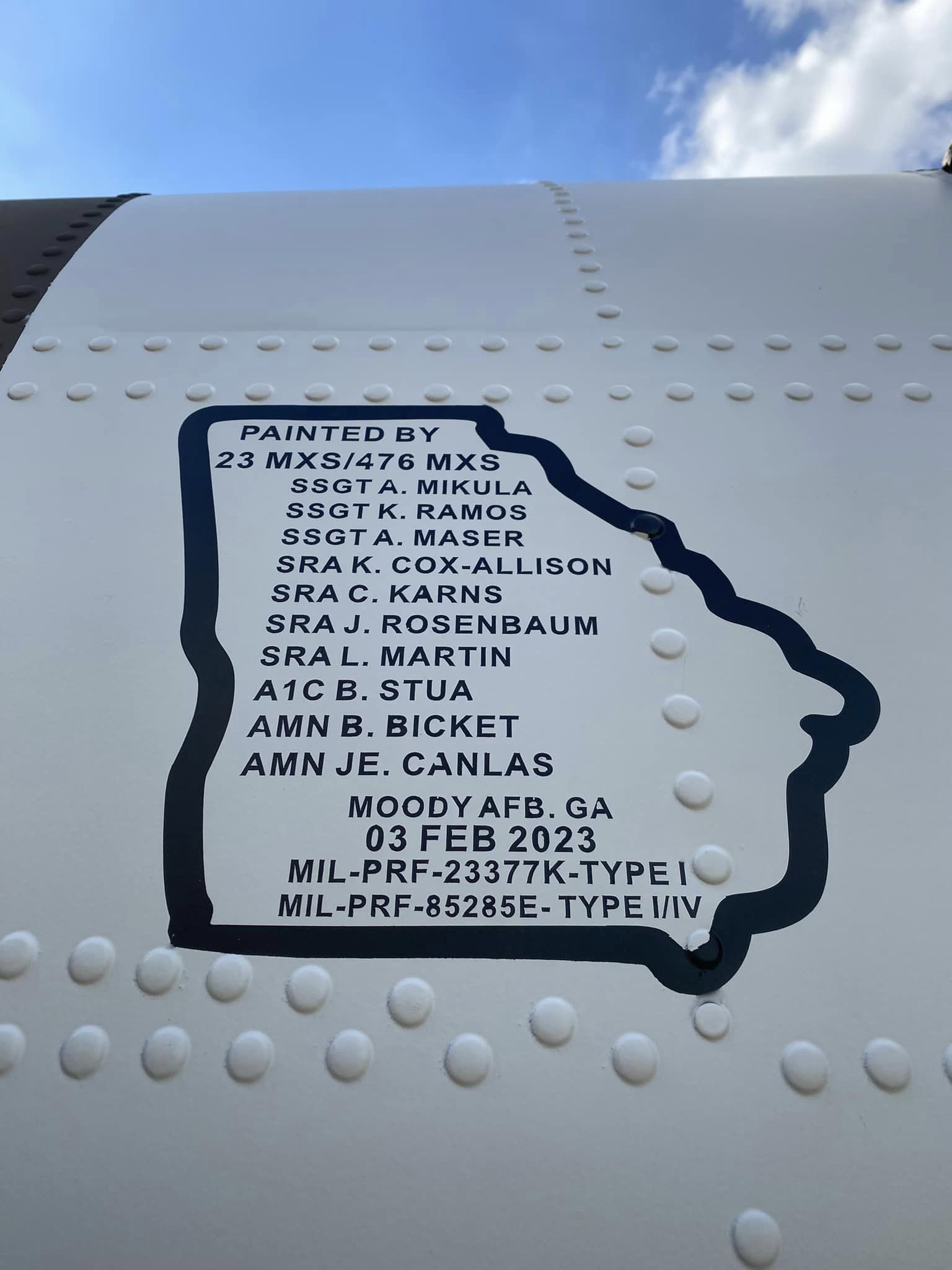
Charles R. Bond Jr. entered the Aviation Cadet Program in 1938 and was subsequently commissioned and received his pilot wings in 1939. After this, in 1941, he volunteered with the Flying Tigers. According to his Air Force biography, Bond is credited with the destruction of nine Japanese planes while flying with the Flying Tigers, elevating him to an ace pilot, and was shot down twice in combat. He was awarded two Chinese medals: The Fifth Order of the Cloud Banner and The Seven Star Wing Medal.
Moody’s 23rd Fighter Group inherited the mission of the disbanded Flying Tigers in July 1942. Five staff officers, five pilots, and 19 ground crewmen of the Flying Tigers became members of the new 23rd Fighter Group when it was first formed. The Group also adopted the nickname of the disbanded Flying Tigers, with a flying tiger featured as its emblem. 23rd Fighter Group still sports the Flying Tigers logo to this day.
While the Flying Tiger’s work continued with Moody’s 23rd Fighter Group, Bond rejoined the Army Air Corps in October 1942, eventually rising to the rank of major general.
So there you have it, a new livery inspired by the early history of 23rd Fighter Group. It’s a fitting tribute to the original Flying Tigers pilots and Charles R. Bond Jr., whose histories continue to inspire A-10 pilots with 23rd Fighter Group today. Good job!
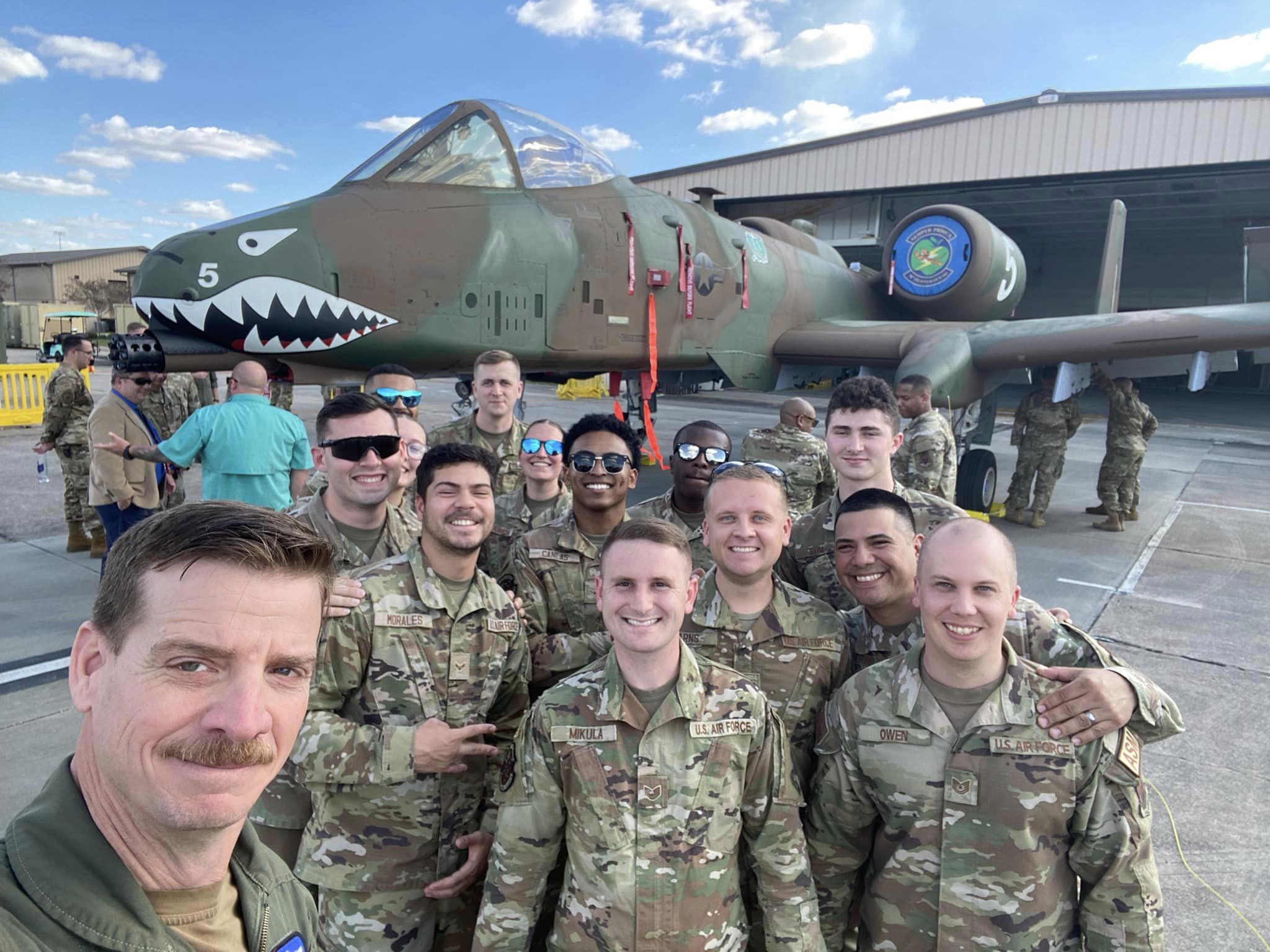
Contact the author: oliver@thewarzone.com
